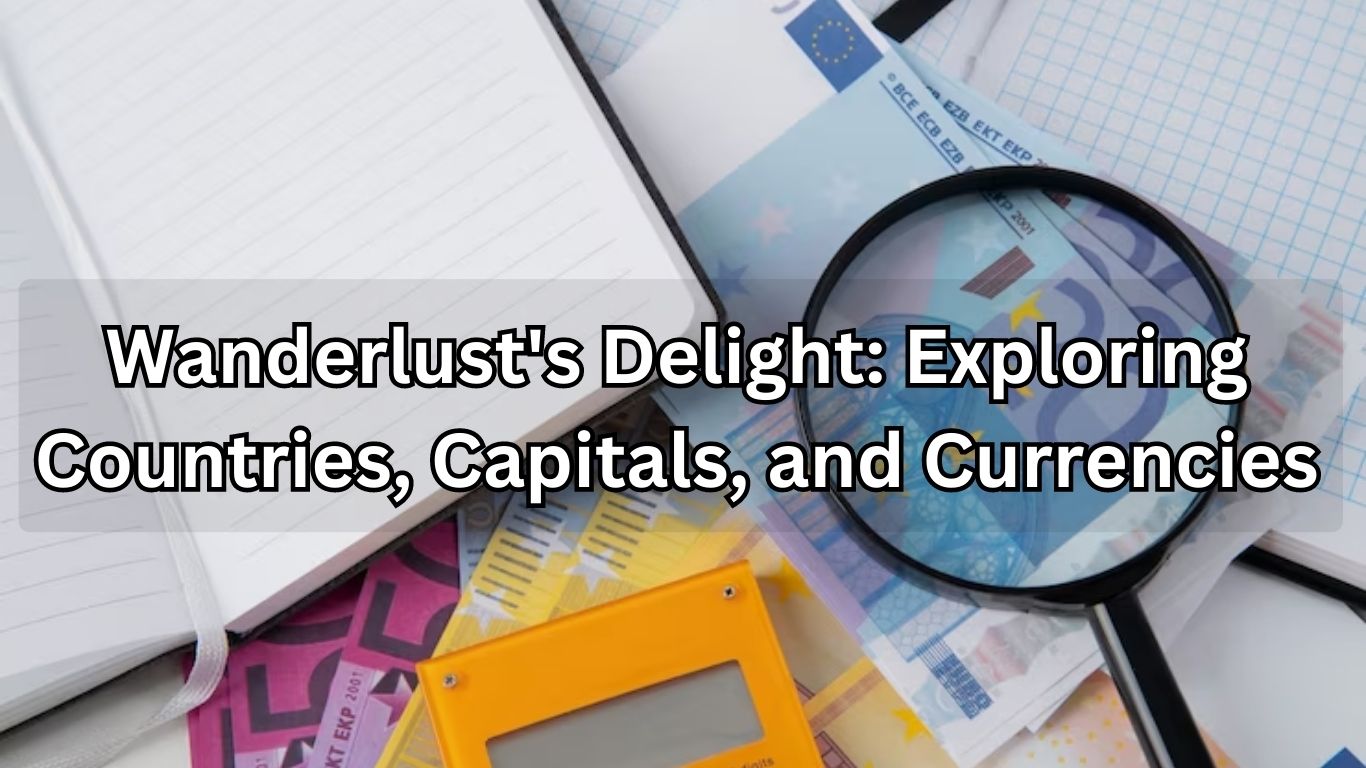
Wanderlust's Delight: Exploring Countries, Capitals, and Currencies
Travel has always been a source of joy and wonder for people around the world. The desire to explore new cultures, witness breathtaking landscapes, and immerse oneself in the beauty of foreign lands is a feeling known as wanderlust. We have the opportunity to abandon our habits while travelling and embrace the unfamiliar. One of the fascinating aspects of travelling is encountering diverse countries, each with its unique capital city and currency. To learn about the world’s country capital and currency, spare a few minutes and read on! This article will embark on a journey to explore the world of countries, capitals, and currencies, celebrating the delightful wanderlust that comes with it.
Capitals: Where Cultures Converge
A country’s capital city is more than just a geographical point on the map; it represents the essence of the nation. Capitals are where cultures converge, histories intertwine, and modernity meets tradition. Take Rome, for instance – the eternal city. Stepping foot in Rome is like stepping back in time, as it is a living museum of ancient Roman civilisation. On the other hand, Tokyo pulsates with modernity and innovation, a dazzling metropolis that seamlessly blends technology with its ancient heritage.
Some capitals, like Paris and London, have become iconic symbols of romance and royalty, respectively. Others, like Cairo and Delhi, have a rich, centuries-old cultural past. Exploring these capitals is like embarking on a journey through time, experiencing the stories of countless generations that have shaped the nation.
Currencies: Uncovering Economic Narratives
Just as each country’s capital has its unique tale, currencies, too, tell their own economic narratives. Currencies hold a wealth of information about a nation’s economic strength, stability, and global standing. The US dollar, for example, is recognised as the world’s primary reserve currency, a testament to the economic might of the United States. Meanwhile, the Euro unites several European countries, fostering economic cooperation and trade within the Eurozone.
The exchange rates between currencies also reflect market dynamics and geopolitical influences. Currency fluctuations can impact international trade, tourism, and investment. For travellers, understanding the currency of the country they’re visiting is essential for budgeting and financial planning.
The Thrill of Currency Exchange
For wanderlust enthusiasts, the act of exchanging currency can be an exciting experience in itself. Standing in a foreign exchange bureau, watching the numbers change on the screen as you convert your money, adds a sense of novelty and adventure to your trip. Currency exchange is an opportunity to learn more about the country’s economy and monetary policies, creating a connection between the traveller and the nation they are visiting.
Challenges and Opportunities
While exploring new countries and their capitals is a dream come true for many, it’s not without challenges. Language hurdles, cultural differences, and strange practises can occasionally lead to perplexity and humour. However, these challenges often lead to unique experiences and heartwarming encounters with locals, leaving lasting memories.
Travel also presents opportunities for personal growth and self-discovery. Experiencing unfamiliar surroundings and stepping outside of your comfort zone helps you become more adaptable, empathetic, and globally aware. Travellers return home not only with souvenirs but also with a wealth of life lessons and unforgettable stories to share.
Wanderlust’s delight lies in the joy of exploration, the thrill of encountering new cultures, and the fascination with different countries’ capital and currency. Each journey is an opportunity to embrace diversity and learn from the world’s various corners. From the grandeur of ancient capitals to the bustling energy of modern metropolises, the world awaits to captivate every traveller’s heart. Pack your luggage, indulge your wanderlust, and start your once-in-a-lifetime adventure now. Happy travels!







